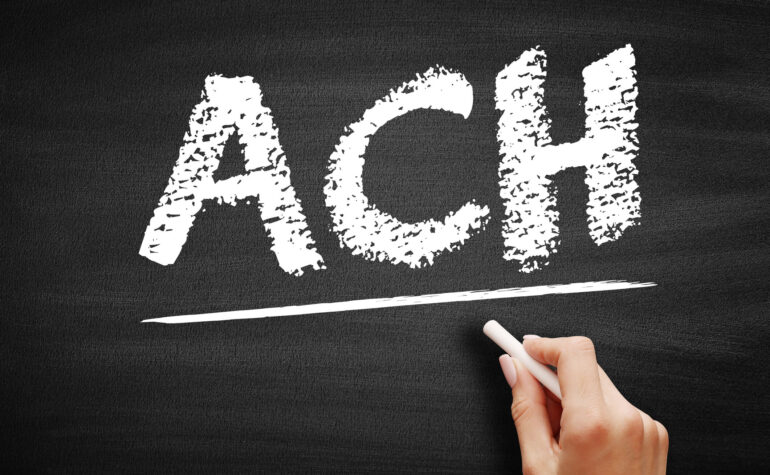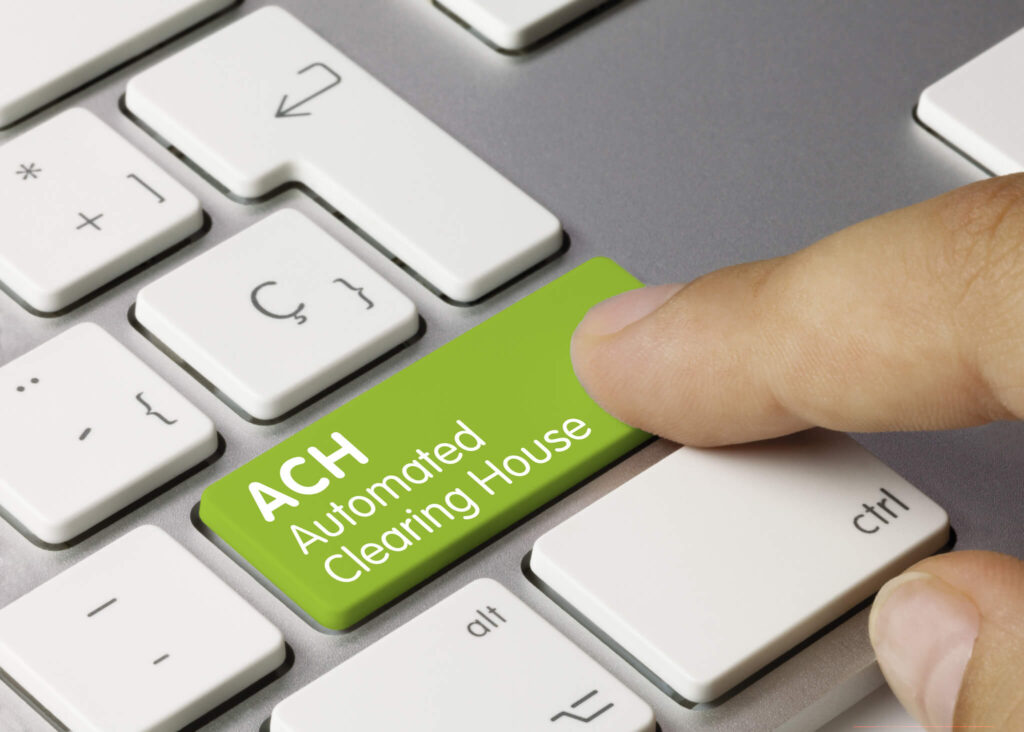Best Credit Card Processing Solutions Tailored for Every Industry

By admin May 10, 2024
Automated Clearing House (ACH) payments are a popular method for transferring funds electronically between banks in the United States. They are used for a variety of financial transactions, including direct deposits, bill payments, and business transactions. This guide will provide a comprehensive overview of ACH payments, including how they work, their benefits, and a detailed step-by-step process on how to set them up.
What is an ACH Payment?

Before we dive into the details of making ACH payments, let’s first understand what exactly an ACH payment is. ACH payments are electronic transfers of funds between bank accounts. They are commonly used for various types of transactions, such as direct deposits, bill payments, and business-to-business payments. ACH payments are processed through the Automated Clearing House network, which is a secure and efficient system that connects financial institutions across the United States.
Understanding the Basics of ACH Payments
To make ACH payments, it is important to have a basic understanding of how the process works. When you initiate an ACH payment, the funds are transferred from your bank account to the recipient’s bank account through the ACH network. The ACH network acts as a middleman, facilitating the transfer of funds between banks. The entire process is electronic, which means there is no need for physical checks or cash.
One key aspect of ACH payments is the use of ACH transaction codes. These codes categorize the type of transaction being made, such as a direct deposit or a bill payment. The ACH transaction codes ensure that the funds are properly routed and processed by the recipient’s bank.
Benefits of ACH Payments
There are several benefits to using ACH payments. First and foremost, ACH payments are convenient. They eliminate the need for physical checks and allow you to make payments from the comfort of your own home or office. Additionally, ACH payments are cost-effective. They typically have lower transaction fees compared to other payment methods, such as wire transfers or credit card payments.
ACH payments are also secure. The ACH network employs various security measures to protect your financial information and prevent fraud. Furthermore, ACH payments are reliable and efficient. They are processed in batches, which means that multiple transactions can be completed at once, saving time and resources for both the sender and the recipient.
Step 1: Setting Up an ACH Account
The first step in making ACH payments is to set up an ACH account. This can be done through your bank or through a third-party payment processor. To set up an ACH account, you will need to provide your personal and banking information, such as your name, address, and bank account number. You may also need to provide additional documentation, such as proof of identity or business registration, depending on the type of account you are setting up.
Once your ACH account is set up, you will be assigned a unique ACH identification number, also known as a routing number. This number is used to identify your bank and ensure that the funds are properly routed during the payment process.
Step 2: Verifying Your Bank Account
After setting up your ACH account, the next step is to verify your bank account. This is done to ensure that you have the necessary funds to make ACH payments and to prevent fraudulent activity. To verify your bank account, you will need to provide your bank account number and routing number to the payment processor or your bank. They will then initiate a small test deposit, usually a few cents, to your bank account.
Once the test deposit is made, you will need to check your bank statement or online banking platform to find the exact amount of the deposit. You will then need to enter this amount into the verification form provided by the payment processor or your bank. This step confirms that you have access to the bank account and that it is valid for making ACH payments.
Step 3: Initiating an ACH Payment
Now that your ACH account is set up and verified, you are ready to initiate an ACH payment. To do this, you will need to provide the necessary information to the payment processor or your bank. This includes the recipient’s name, bank account number, and routing number. You will also need to specify the amount of the payment and the date on which you want the payment to be processed.
It is important to double-check all the information before submitting the payment request to ensure that the funds are transferred to the correct recipient. Once the payment request is submitted, the funds will be debited from your bank account and credited to the recipient’s bank account through the ACH network.
Step 4: Ensuring Security and Fraud Prevention
While ACH payments are generally secure, it is important to take additional steps to ensure the security of your transactions and prevent fraud. One way to do this is by using strong and unique passwords for your ACH account. Avoid using easily guessable passwords and consider using a password manager to securely store your login credentials.
Another important security measure is to regularly monitor your bank statements and transaction history. This allows you to quickly identify any unauthorized transactions and report them to your bank or payment processor. Additionally, be cautious of phishing attempts and never provide your ACH account information to unknown or suspicious sources.
Frequently Asked Questions
Q.1: Are ACH payments secure?
Yes, ACH payments are secure. The ACH network employs various security measures, such as encryption and authentication protocols, to protect your financial information and prevent unauthorized access.
Q.2: How long does it take for an ACH payment to process?
The processing time for ACH payments can vary depending on various factors, such as the time of day the payment is initiated and the banks involved. In general, ACH payments can take anywhere from one to three business days to process.
Q.3: Can I cancel or modify an ACH payment?
Once an ACH payment is initiated, it can be difficult to cancel or modify. It is important to double-check all the information before submitting the payment request to avoid any errors or discrepancies.
Q.4: Are there any fees associated with ACH payments?
While ACH payments typically have lower transaction fees compared to other payment methods, such as wire transfers or credit card payments, there may still be fees associated with certain types of ACH transactions. It is important to check with your bank or payment processor for specific fee information.
Q.5: Can I make international ACH payments?
ACH payments are primarily used for domestic transactions within the United States. If you need to make international payments, you may need to use alternative methods, such as wire transfers or international money transfer services.
Conclusion
In conclusion, ACH payments offer a convenient, cost-effective, and secure way to transfer funds electronically. By following the step-by-step guide outlined in this article, you can easily set up an ACH account, verify your bank account, and initiate ACH payments. Remember to prioritize security and fraud prevention by using strong passwords, monitoring your bank statements, and being cautious of phishing attempts. With ACH payments, you can simplify your payments and enjoy the benefits of a fast and efficient payment method.
